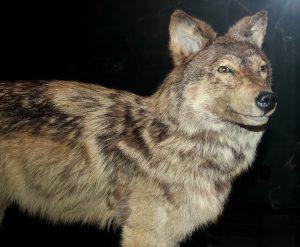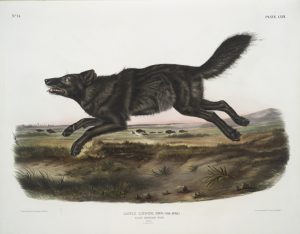Right now our wolves and many endangered species are facing a terrible crisis. It is a frightening thought that wolves could indeed become extinct. We currently have as few as 110 Mexican Gray Wolves and about 50 Red Wolves left in the wild. There are already seven wolf species that have become extinct. We have read about how close all wolves were to becoming extinct in the last century. We can’t let that happen again! So many more wolves will receive a death sentence if we don’t act now! Let’s #StopExtinction
The first thing we can do is ask all Democratic Senators to oppose all legislation to delist wolves and dismantle the ESA. Tell them the Endangered Species act must stay intact. This is because most of the GOP is in favor. It won’t require much time to do this.
We can join together to prevent any more bloodshed. Be a part of history to allow Protect the Wolves ™ to fight in court with whatever you can contribute for attornies fees. Using the Indian Trust and the Public Trust we will be able to see great changes. We also want you to know not one person with Protect the Wolves is getting paid. We want every cent to go to this cause. We volunteer countless hours of our time out of love for these amazing animals. They are important and Sacred to us. They keep ecosystems intact. There are many that would like them wiped out. Ranchers and trophy hunters are eager to kill many more.
You have read about how we can turn things around with attornies that will fight in court so we can finally protect wolves. Let’s do this!! ~L.G
Here are 7 extinct species and though some survived fearsome contenders like the saber-tooth tiger, none of them could contend with humans.

Stuffed And Displayed Specimen Of The Newfoundland Wolf (Author: George Ian Bowles cc 2.0)
Worldwide, there are four species of wolves roaming in the wild today: the gray wolf (Canis lupus), the red wolf (Canis rufus), the Ethiopian wolf (Canis simensis), and the more recently ‘added’ African Golden wolf (Canis anthus).
In addition, there are several other subspecies scattered across almost every continent on Earth.
But did you know that there used to be many more wolf species/subspecies on Earth?
In fact, if you think today’s wolves are fierce, you need to read about some of their ancestors that were larger, fiercer, and probably even faster than modern day wolves.
Sadly, they went extinct largely due to human activities: because when wolves and humans have a clash of interests, wolves tend to lose.
Below is our list of 7 distinct but now extinct wolf species:
1) The Kenai Peninsula Wolf (Canis Lupus Alces)
The Kenai Peninsula wolf is one of four subspecies that lived in Alaska. It weighed up to 90kg (200 lbs.) and resembled the gray wolf in stature. The Kenai wolf was relatively large. Unfortunately, once gold was discovered in the region in 1895, it marked the beginning of the end for this wolf.
As a result of a large influx of settlers searching for gold, by 1925 the Kenai wolf was extinct. In a mere thirty years miners’ fears of rabies along with the value of wolf pelts proved to be forces too great for the Kenai wolf to overcome.
2) The Cascade Mountain Wolf (Canis Lupus Fuscus).
This wolf attained the status of a wolf subspecies in 1839. It roamed in the Cascade Mountain Range of the Western United States from south western Canada to Northern California.
As with several other wolf subspecies in that part of the world in the late 1800s, the Cascade Mountain wolf did not survive the onslaught of miners and trappers. By 1940 it was considered extinct. This extinct wolf species was described as having a cinnamon, or grayish-brown coat with hints of red and black intermingled in its fur.
3) The Japanese Wolf (Canis Lupus Hodophilax)
Officially recognized as an extinct wolf species in 1905. This wolf lived on at least three islands of the Japanese archipelago.
The Japanese wolf was commonly known as the Honshu wolf, and the subspecies’ Latin name is in accordance with Japanese folklore, in which wolves were seen as the protectors of travelers. Estimates say that the Japanese Wolf’s ancestors lived roughly 28,000 years ago.
In the 18th century rabies appeared in Japan, and the government implemented a policy to destroy the animals altogether. The aim was to prevent the spread of rabies to humans and reduce the wolf’s attacks on the domestic horse population.
4) The Dire Wolf (Canis Dirus)
This is probably the most famous extinct wolf species thanks to the popular HBO series A Game of Thrones. Its name Canis dirus means fearsome dog and it’s thought to have been extinct for over 12,000 years now.
Skeletal remains of the Dire wolf indicate it was the size of some of the larger modern day wolves roaming North America today, weighing between 59 and 68 kg (130 and 150 lbs.).
Although little is known about the Dire wolf relative to its more modern-era cousins, scientists have concluded this predator had an appetite for horses. Also, it was a contender of the famous saber-toothed tiger, and it inhabited a territory between the far north of Canada and as far south as Bolivia.
5) The Florida Black Wolf (Canis Rufus Floridanus)

Florida Black Wolf Drawn by James Audubon (Courtesy: Wikimedia Commons, PD)
This canid was recognized as extinct in 1908. This subspecies of wolf roamed in parts of southern Florida, and it’s the subject of a famous painting by none other than John James Audobon.
The Florida Black wolf was eventually over-hunted by trappers and forced out of its native habitat which ultimately led to its extinction.
In addition, it was closely related to another subspecies of wolf named the Florida Red wolf, which was also recognized as an extinct wolf species shortly afterwards in 1921 for similar reasons as the Florida Black wolf.
6) Texas Wolf (Canis Lupus Monstrabilis)
Although the Texas wolf did not become officially recognized as a wolf subspecies until 1937, it was declared extinct in 1942. This wolf roamed as far south as Southern Mexico and throughout Texas and portions of Louisiana.
The Texas wolf’s diet primarily comprised of American bison, and upon the massive population reduction of Bison in the 19th century it naturally shifted its appetite to cattle. Unfortunately for it, competing with the booming North American ranching industry of that era meant eventual extinction.
7) The Newfoundland Wolf (Canis Lupus Beothucus)
The last known individual of this extinct wolf species was killed in 1911. It was described as a medium sized wolf (up to 100 lbs.), having a slim nose and head, and white coat.
This aptly-named subspecies existed on the island of Newfoundland off the eastern coast of Canada. As a matter of fact, the demise of the Newfoundland wolf is most often attributed to government bounties and over-hunting in general. Also, a dramatic drop in the Caribou population which the wolves hunted as prey added to the problem.
There are still so many other extinct wolf species and subspecies probably too many to document. However, you’ll notice a common trend in each case discussed above. In each situation, wolves suffered the negative effects of coming in close proximity with human activities.
Though on a positive note, people are gradually beginning to understand the unique place of wolves in the terrestrial ecosystem. Hence, with time maybe it will no longer be a case of wherever humans appear wolves vanish.
References:
1. https://en.wikipedia.org/wiki/Kenai_Peninsula_wolf
2. http://www.cosmosmith.com/cascade_mountain_wolves.asp
3. https://en.wikipedia.org/wiki/Japanese_wolf
4. https://en.wikipedia.org/wiki/Dire_wolf
5. https://en.wikipedia.org/wiki/Florida_black_wolf
Photo Credits:
1. https://en.wikipedia.org/wiki/Florida_black_wolf#/media/File:FloridaBlackWolf.jpg
2. https://en.wikipedia.org/wiki/Newfoundland_wolf#/media/File:Stuffed_Newfoundland_wolf.jpg
Comments
The hate and killing of innocent humans across this world and even on our own soil doesn’t stop there. Our wolves and wildlife are also being slaughtered to end at least seven species of wolves and only leaving us with 110 Mexican Gray Wolves and 50 Red wolves in the wild. The hate continues by what we call a civilized country but that isn’t the case when it comes to humans who are on a mission to slaughter our majestic wolves like Trophy hunters who are so happy triggers and camp just outside the Yellowstone National Park waiting and even luring them out of park boundaries to be killed instantly. Then we have the cattlemen who would like to see all wolves killed that may have a few cattle killed while grazing in public land with no supervision and that on its own is very tempting for the wolves and finally poachers and outfitters that make much money to guide humans to where they can be shot easily.. The war on wolves are now instantly happening to a point I fear our wolves are so close to the verge of instinction.. Protect the Wolves and many of their followers have been working so very hard without any of them getting paid to put our compassionate hearts to stop the slaughtering of these majestic animals and have all the necessary tools in place as far as finding Attorneys who know all the laws and loop holes to close but unfortunately we need the necessary funds to pay them so the states who think they own our wildlife but are so very wrong. Will no longer have control. So I am asking with great appreciation for your help to give any amount you can spare like for example $5.00 every month and with many who do the same we can afford to stop the war of our beautiful wolves. Please join us to make this dream actually come through and put a stop to extinction.. In closing I must say it once more help “PROTECT THE WOLVES ” and give from your heart ❤️. Thank you and much appreciated.